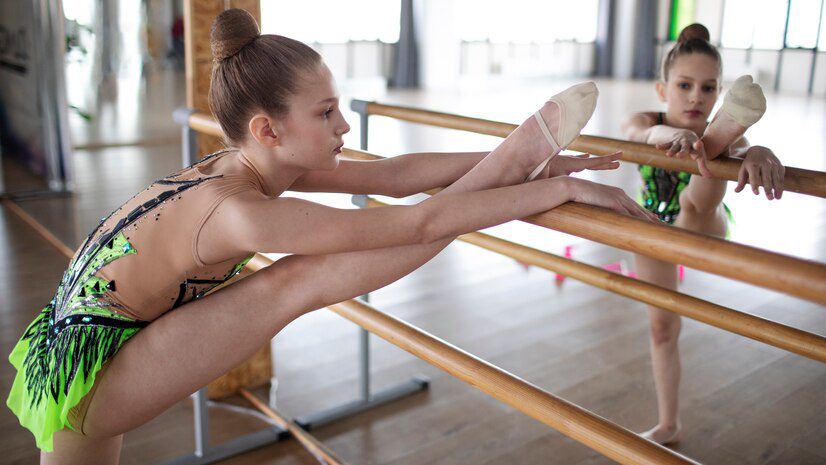Rhythmic gymnastics is a mesmerizing blend of athleticism and artistry. Young girls, adorned with vibrant leotards and twirling ribbons, navigate a complex world of leaps, throws, and apparatus manipulation. But beneath the dazzling routines lies a fascinating scientific reality – sensitive periods of coordination that play a crucial role in their development.
The Art of Rhythmic Gymnastics: More Than Meets the Eye
Rhythmic gymnastics demands exceptional physical prowess.
Gymnasts require a unique combination of flexibility, strength, power, and agility, all while executing movements with flawless coordination and artistic expression. This intricate dance between body and apparatus requires precise timing and motor skill development, which is where sensitive periods of coordination come into play.
Sensitive Periods: Nature’s Window of Opportunity
Imagine a window of opportunity during childhood – a time when the brain is wired to learn specific skills with greater ease and efficiency. These are sensitive periods of coordination. During these periods, the brain exhibits heightened plasticity, allowing for rapid development of motor skills like throwing, catching, and balance.
A Spotlight on Rhythmic Gymnastics: Sensitive Periods in Action
While research on sensitive periods of coordination is ongoing, here’s a breakdown of some key skills in rhythmic gymnastics and their potential sensitive periods:
| Skill | Sensitive Period | Developmental Window |
| Balance | 3-6 years | Early childhood is crucial for developing a strong foundation in balance. Rhythmic gymnastics training during this time can enhance the vestibular system and proprioception, further refining balance skills. |
| Hand-Eye Coordination | 5-8 years | This period coincides with rapid development of visual pathways and motor planning. Rhythmic gymnastics with its focus on apparatus manipulation and rhythmic movements can significantly enhance hand-eye coordination. |
| Spatial Awareness | 6-10 years | During this time, the brain builds a sophisticated map of the body in relation to its surroundings. Rhythmic gymnastics training with various apparatus and floor routines can solidify spatial awareness and body control. |
The Nuances of Sensitive Periods: It’s Not Just About Age
It’s important to remember that sensitive periods of coordination are not rigid age ranges. Genetics, individual development, and training intensity all play a role. However, understanding these windows can provide valuable insights for coaches and parents.
Optimizing Training During Sensitive Periods: A Coach’s Toolkit
By understanding sensitive periods of coordination, coaches can tailor training plans to maximize learning and minimize the risk of injury. Here are some tips:
Focus on Foundational Skills: During early years, prioritize activities that develop balance, coordination, and spatial awareness. Think of it as building a strong foundation before introducing complex skills.
Variety is Key: Rhythmic gymnastics training should be engaging and incorporate diverse activities to stimulate different areas of the brain. Think of it as keeping things fresh and fun while fostering well-rounded development.
Individualized Approach: Each child learns at their own pace. Coaches can adjust training intensity and complexity based on individual development and sensitive periods of coordination.
Beyond Sensitive Periods: Nurturing a Lifelong Love for Gymnastics
While sensitive periods of coordination are crucial for early development, rhythmic gymnastics can be enjoyed throughout life. The joy of movement, artistic expression, and the pursuit of excellence are timeless motivators. Here are some reminders:
Focus on Enjoyment: Nurture the intrinsic love for the sport. Let passion, not pressure, guide their journey.
Celebrate Progress: Recognize and celebrate even small victories.
Holistic Development: Rhythmic gymnastics should complement other activities. Encourage well-rounded development that includes social interaction, academics, and relaxation.
The Final Leap: Unveiling Potential with Science and Passion
Understanding sensitive periods of coordination empowers coaches and parents to support young gymnasts in their pursuit of excellence. By combining scientific knowledge with a passion for the sport, we can create an environment where girls can blossom into graceful, confident athletes, ready to twirl their way to success, one leap, throw, and ribbon twirl at a time.







